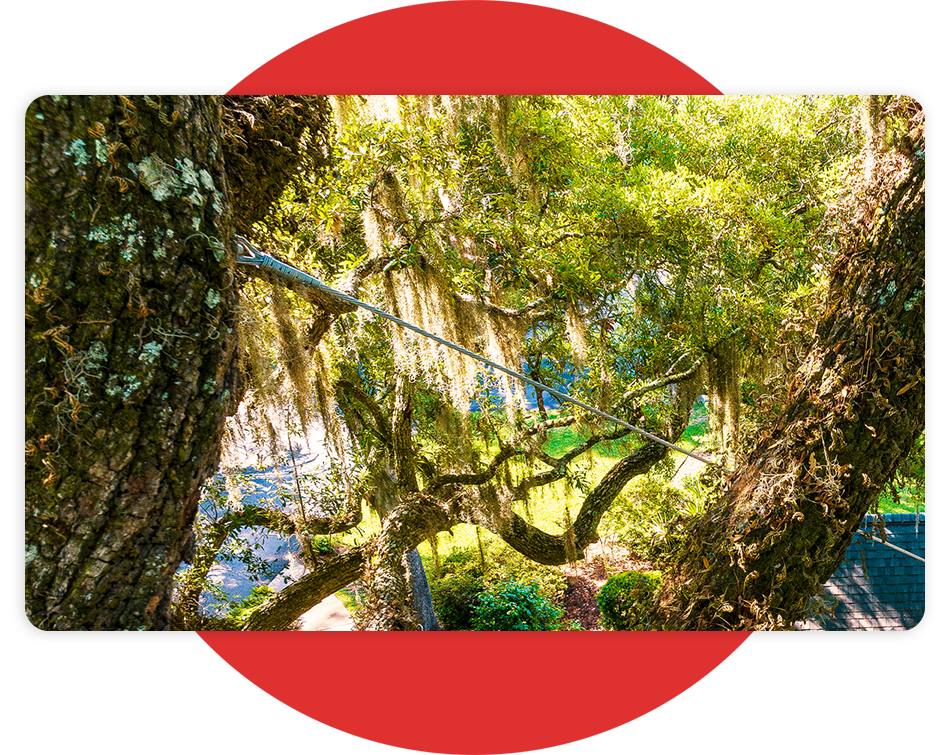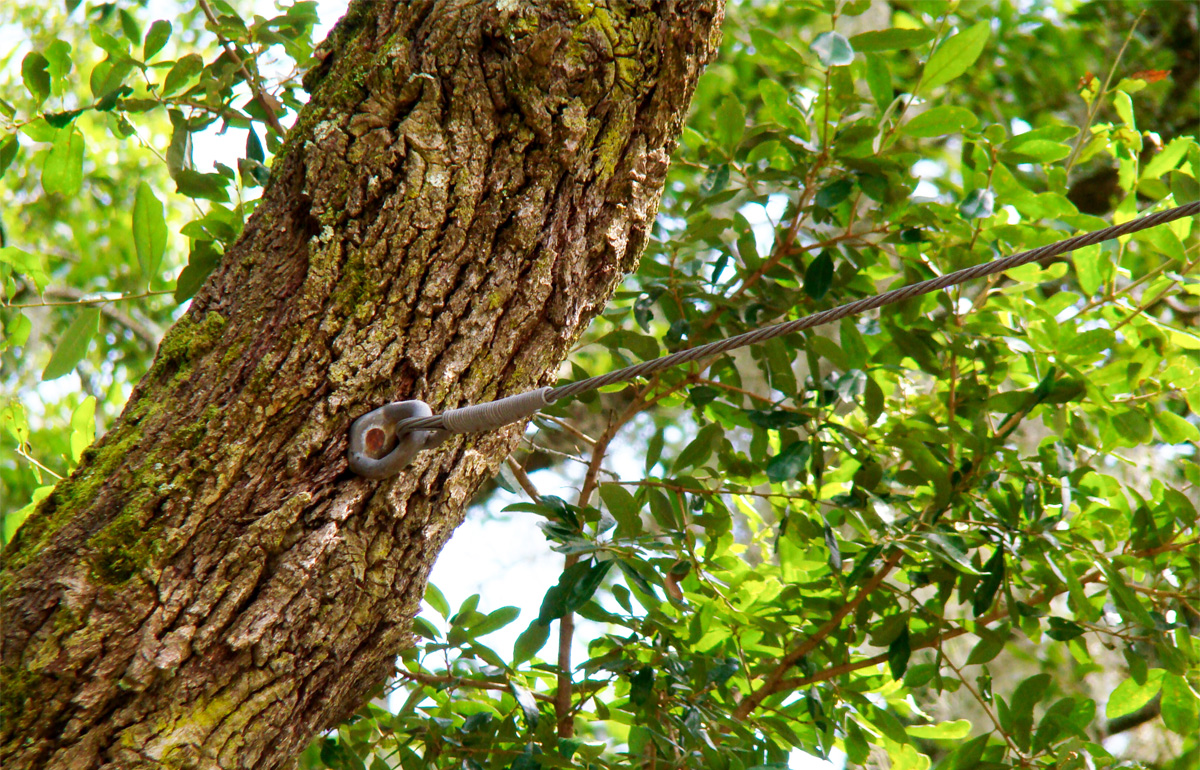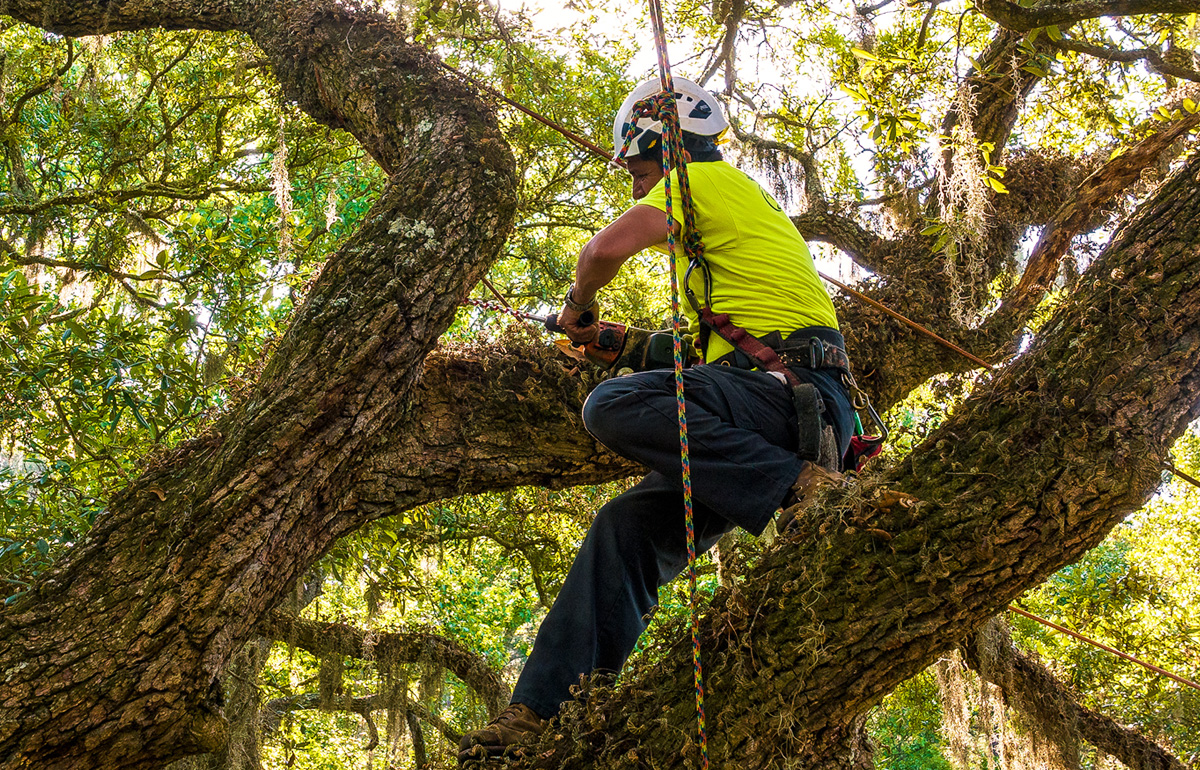Tree Cabling & Bracing
Give your tree the support it needs
Install cables and braces to provide extra support to limbs that need it.

Sometimes a tree needs a little extra support
You don't want healthy, beautiful limbs to break. When used wisely, cabling and bracing may reduce the risk of failure and extend the life of a tree.
In determining whether cabling is warranted, we take the condition of the tree into consideration. If the root system is not structurally sound, or if the tree contains excessive decay, removal of the tree may be preferable. Otherwise, cabling and bracing can be a viable option.

Cabling
Cabling works well in many situations. We install it in trees to limit the movement of limbs that have a weak connection. It also gives extra support to heavy limbs by connecting two or more limbs together. This additional support may be needed due to split or decayed crotches, crotches with included bark, or the inherent danger of weak-wooded trees.
Branches that pose a potential threat to property or people may also be good candidates for cabling. Multi-stemmed trees are especially susceptible to breaking under the stress of wind or the weight of accumulated rain or ice.
Bracing
Bracing refers to the use of steel rods in limbs, leaders, or trunks to provide rigid support for a tree. Bracing is used to reinforce weak or split crotches or to strengthen decayed areas. In most cases, we use bracing in combination with cabling but not as a substitute.

Schedule your FREE tree care consultation with one of our arborists.
Schedule now
"Adam, thank you for the tree work at our home in Colleton River. Good job!"

